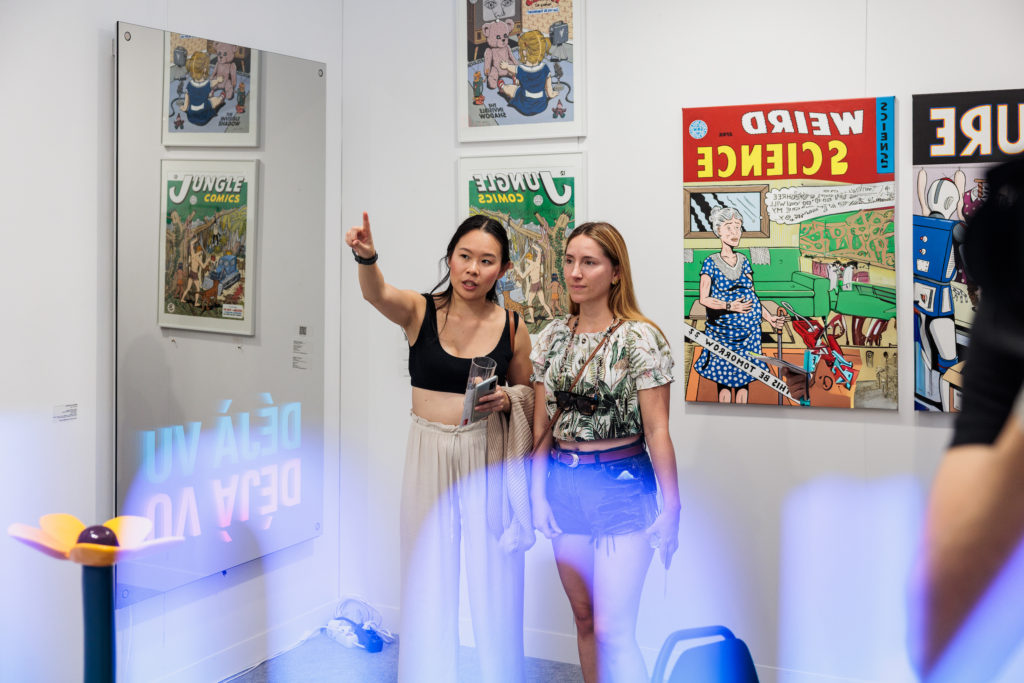Gender Inequalities in the Art World

The Grammys last month were a celebration of female power, and similar strides are being made in the visual arts world. Yet, despite this progress, a significant gender pay gap persists in the art world, both in Austria and globally. Works by female artists often sell for a fraction of the prices fetched by comparable works by male artists. Find here our report on the status quo.
Female Underrepresentation
In Austria, the awards for artistically outstanding life’s work have been disproportionately awarded to men, with 102 men and only 14 women receiving the honor between 1950 and 2022.
Similarly, the Art Senate of Austria in 2022 consisted of 17 men (85%) and only three women (15%).
Women still occupy fewer directorships at museums with budgets over $15 million, holding 30% of art museum director positions and earning 75¢ for every dollar earned by male directors. The Ongoing Gender Gap in Art Museum Directorships, AAMD
Globally, the statistics paint a stark picture: only three women are listed among the 30 most important contemporary and modern artists
Globally, collections remain persistently dominated by works by male artists, with a ratio of 61% to 39% female. (even sinking again)
The lowest representation of female artists 2023 was in collections in Mainland China (31%), and showed a significant 8% drop in share year-on-year. There were significant declines in representation in the UK too (down by 11% year-on-year), as well as the US and France (both down by 5%).
Market Disparities
In Austria, 37% of men active in arts do not rely on financial income through other jobs, while only 22% of female artists can live exclusively from their art (22%).
Between 2008 and 2019, artwork by women accounted for just 2% of the $196.6 billion spent at art auctions.
The market for art by women is not only smaller but also disproportionately concentrated on a few artists. Just five female artists accounted for 40.7% of the $4 billion spent on women’s artwork over the past 11.5 years. The share has even dropped in 2022 and 2023, with works by female artists being a minority at 39%, and less than the spending on male artists in all markets.
This meager share is divided between only a handful women, namely in descending order, Yayoi Kusama, Joan Mitchell, Louise Bourgeois, Georgia O’Keeffe, and Agnes Martin.
Positive Signs
Women spent more than men in 2023 – as well as in 2022 and 2021 – on art, continuing to grow in value and reaching a higher level than the previous year. (although men reported higher average spending with values skewed up by a small number of very high male spenders and there was more than double the number of men spending over $1 million in each period than women).
Collectors spending over $10 million per annum tended to have both a higher share of female artists’ works in their collections (54%), and their proportion of spending also increased from 46% in 2021 to 55% in 2023. This could indicate that, although undertaken by a minority of collectors, some of the spending at the very highest levels was on female artists.
Galleries with a share of over 80% female artists had an average growth of 21% in 2022, while those with a meager share of female artists had lower year-on-year sales growth performance.
In the 2022 Venice Biennale, where female artists outnumbered men for the first time in a ratio of 9 to 1.
From March 2019 to March 2020, Richard Saltoun Gallery dedicated 100% of its exhibition and art fair program to women artists. Titled 100% Women, the initiative was implemented to address the gender inequality that persists in the art world and encourage wider industry action through debate, dialogue and collaboration.
Let’s continue to foster this trend in the years to come!
(Sources: BMKÖS Kunst-und Kulturbericht 2022, Art Basel Survey of Global Collecting 2023, Artnet, Artland)












